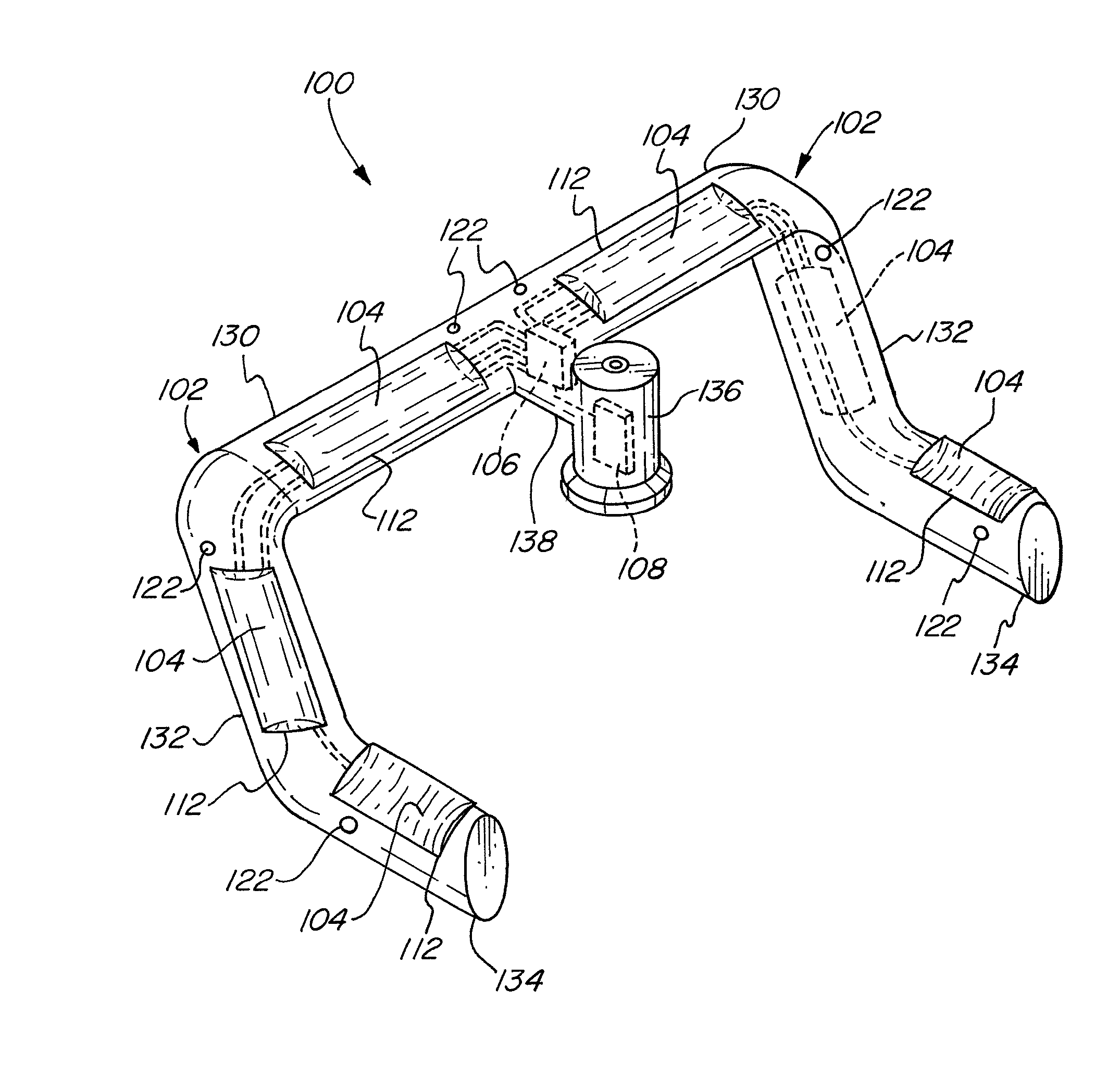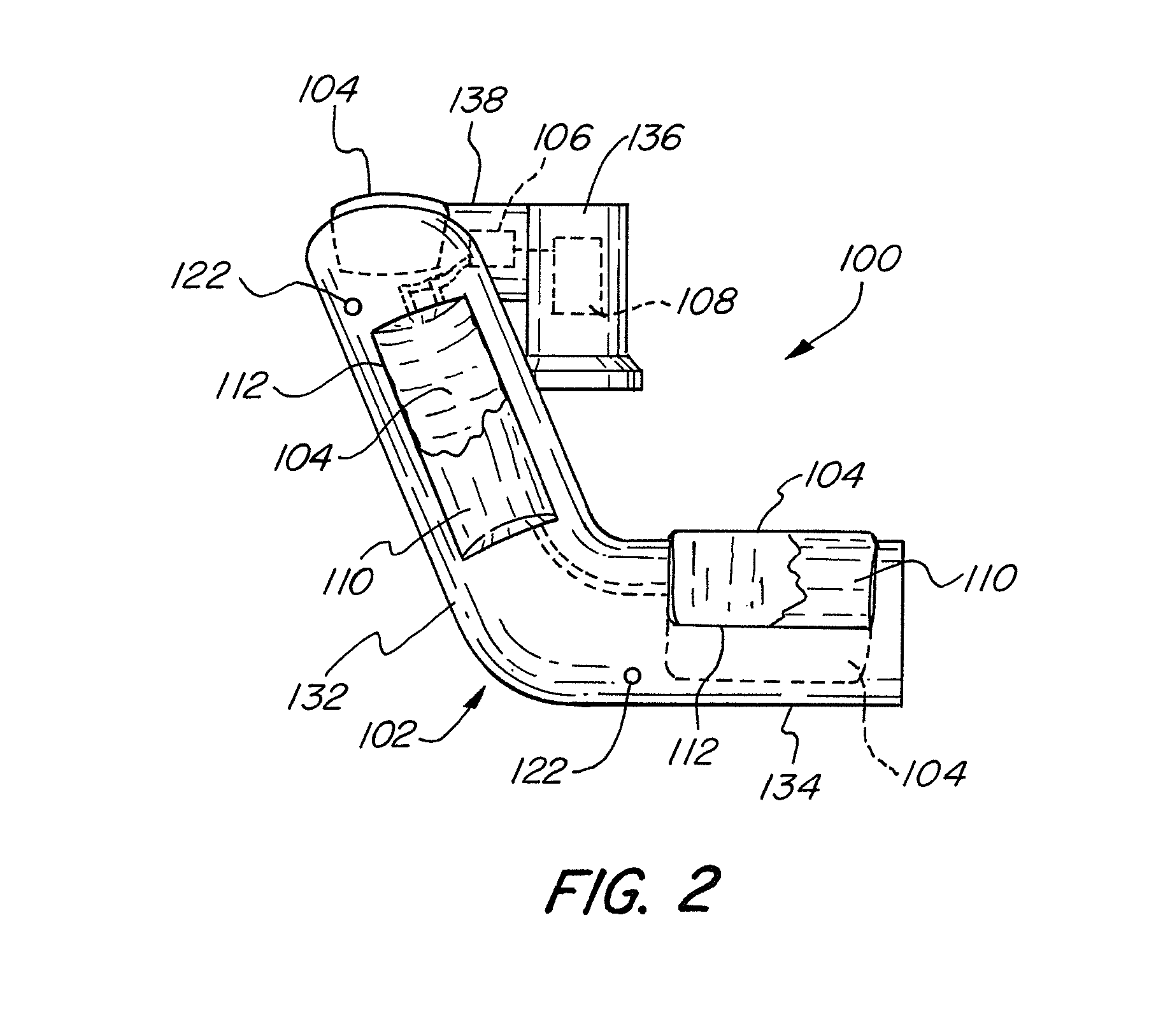Vibration and pressure damping device for gripping handles and steering mechanisms
a technology of vibration damping and steering mechanism, which is applied in the direction of steering device, portable power-driven tools, cycle equipment, etc., can solve the problems of reducing the user's ability to control or control the vibrating object, affecting the operator's ability to control and maneuver the handgrip, and prone to injury of the nerve, so as to sufficiently attenuate the range of vibration and impact pressure. , the effect of reducing the range of vibration and impact pressur
- Summary
- Abstract
- Description
- Claims
- Application Information
AI Technical Summary
Benefits of technology
Problems solved by technology
Method used
Image
Examples
Embodiment Construction
[0038]The following detailed description illustrates the invention by way of example, not by way of limitation of the principles of the invention. This description will enable one skilled in the art to make and use the invention, and describes several embodiments, adaptations, variations, alternatives and uses of the invention, including what is presently believed to be the best mode of carrying out the invention.
[0039]As used herein, the terms “upper extremity” and “upper extremities” encompasses the fingers, hands, wrists, arms, elbows and shoulders of a person.
[0040]Referring to the figures in detail and first to FIGS. 1-3, there is shown an exemplary embodiment of a damping device for protecting the upper extremities of a person (“operator”) who is operating a vibrating object against vibrations, impact pressure, and shocks transmitted through the handgrip. The damping device 100 shown in FIG. 1 is implemented into the handgrip 102 of a bicycle. Although this figure and the foll...
PUM
 Login to View More
Login to View More Abstract
Description
Claims
Application Information
 Login to View More
Login to View More - R&D
- Intellectual Property
- Life Sciences
- Materials
- Tech Scout
- Unparalleled Data Quality
- Higher Quality Content
- 60% Fewer Hallucinations
Browse by: Latest US Patents, China's latest patents, Technical Efficacy Thesaurus, Application Domain, Technology Topic, Popular Technical Reports.
© 2025 PatSnap. All rights reserved.Legal|Privacy policy|Modern Slavery Act Transparency Statement|Sitemap|About US| Contact US: help@patsnap.com



